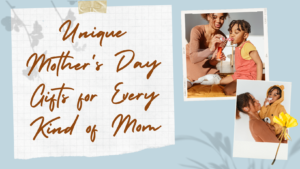Morocco has a very diverse architectural landscape. Its inspiration came from Spanish-Moorish art. It is a kind of art that may still be seen in many foreign and Moroccan structures. It is an architectural design that Muslims created more than a thousand years ago and which continues to wow people with its beautiful qualities. Will Traditional Moroccan Architecture Ever Take Over the World?
It is not uncommon to find traditional Moroccan architecture. On the other hand, the bulk of these buildings are fairly old and may be several centuries old. Morocco has had the impact of several civilizations over the years due to its special geographic position.
For many years, a combination of African tribes from the other side of the Sahara Desert, Islamic customs from the Arab neighbors, and European invaders formed the country. Nowhere is this more evident than in the distinctive Moroccan architectural style, which reflects how all of these influences combined to produce a civilization unlike any other.
It is fortunate that several of them still allow individuals to admire the full splendor of traditional Moroccan architecture because of the renovations carried out in recent years. It is to this extent that every Moroccan region does have its own distinctive architectural style, especially given the abundance of architectures that are endowed with distinctive charm and that boast the distinction of being incredibly diverse, especially in light of the numerous influences that Morocco has experienced over the centuries.
The greatest influence on Moroccan architecture (ancient and modern) is Islam, yet diverse Moroccan architectural design features may be recognized in Moroccan buildings all around the country today. In fact, for centuries in Morocco, the construction and embellishment of structures has been governed by the unique decorative guidelines of Islam.
The Hispano-Moorish architectural style, which is typical of North Africa and the Iberian Peninsula, also established roots in Morocco during the Almoravid era in addition to the Islamic influence. Today, the majority of the structures in the nation combine these two distinct Morocco styles.
It might be daunting to comprehend the wide range of Moroccan buildings and the many Moroccan architectural styles and features, so let us guide you through the different types of elements.
Design Elements
The distinctive Morocco architecture undoubtedly contributes to the country’s reputation as one of attraction, mystery, and beauty. The majority of the nation’s creative legacy has persisted up to the present day despite its occasionally turbulent history.
Moroccan architecture design features are heavily influenced by Islam. These consist of vibrant zellij, intricate geometric designs, and decorative Islamic calligraphy of phrases from the Quran (a ceramic-tile mosaic). The majority of buildings also include central open courtyards with opulent gardens; they were built as spaces for seclusion and leisure.
Moroccan architecture also frequently uses the Hispano-Moorish design. Sharp white walls, stucco roofing between the arches, and substantial domes are some of its key architectural features. The beauty of Moroccan architecture is that these features are frequently incorporated into structures designed in an Islamic manner, including mosques and medersas (Quranic schools).
Different Structures, Different Design
Moroccan architecture stands out for its extraordinary fusion of many design elements as well as the distinctive characteristics of each traditional Moroccan buildings. Mosques, riads, souks, ramparts, kasbahs, palaces, and medersas are just a few of the various Morocco buildings that can be found all across the country; each one has a distinct purpose and has a distinctive architectural style. Some of these will be discussed below.
Mosques
One of most important structures in Morocco, in my opinion, are mosques. There is always at least one mosque with a high minaret in every city, village, or town, no matter how big or small. It is understandable why visitors believe Moroccan mosques to be the pinnacle of Moroccan architecture style with its green and white zellij-covered walls and fountains as well as their exquisitely decorated mirhabs (a niche marking the direction to Mecca) made of marble and stucco.
Discover the spiritual city of Fez, notably Al-Qarawiyyin Mosque, for some of the most stunning examples of mosques with outstanding Moroccan architecture. You should be aware that only the Hassan II Mosque in Casablanca and the Tin Mal Mosque in the remote High Atlas Mountains are accessible to non-Muslims for tours within the structures.
Riads
Riads are the name for traditional Moroccan houses and palaces. These Moroccan home architecture were created as private houses with a focus on solitude. With a Moroccan design courtyard in the middle, they are inwardly centered and provide seclusion for the family as well as shelter from the local climate. All of the rooms in this Morocco building have windows that solely face the courtyard and are open to it.
Moroccan modern architecture, which includes a fountain and orange or lemon trees, is frequently used to embellish courtyards. The riad may be embellished with exquisite zellij and stucco work depending on the family’s wealth. In Marrakesh and Essaouira, several examples of traditional Moroccan architecture, such as the old riads, have lately undergone renovations, and many of them are now used as hotels and restaurants.
Kasbahs
The kasbah is a form of medina that was constructed as a defensive structure. Kasbahs are quite impressive, aside from their extraordinary size, and were typically constructed in harmony with their surroundings. With their tan exteriors, the huge outside walls and all the Morocco buildings inside seamlessly merge into the background.
The rooms may remain warm in the winter and cool in the summer thanks to the simplistic building materials utilized. Particularly fascinating traditional Moroccan architecture can be found at the Kasbah des Udayas in Rabat.
Medersas
Merdersas were actual thriving hubs of the study of law, philosophy, and astrology in addition to being places for religious instruction. Their Moroccan architectural design is distinctive in that it depicts a stark contrast between the students’ incredibly small and plain wooden dorm rooms and the gate, which is lavishly decorated, and the large central courtyard, which is lined with exquisitely decorated arches with intricate stucco work.
The mosque, which was housed within the tall school walls, would likewise be gorgeously ornamented with elaborate geometric patterns and sweeping Islamic calligraphy on gleaming green and white zellij. If you want to see one of the nation’s greatest examples of traditional Moroccan architecture, consider visiting Medersa Bou Inania in Fez. It’s tough to comprehend the remarkable décor difference in these schools.
There are several towns and regions in Morocco, in addition to the specific locations we have previously described in this post, where you may see the stunning Moroccan architectural style flourish in all its splendor.
Because they provide the most variety in a small area, Marrakesh and Fez are frequently the top destinations for tourists. Bahia Palace and Saadian Tombs in Marrakesh, Andalous Mosque, and Museum of Moroccan Arts in Fez are notable Moroccan buildings worth visiting.
However, the Atlas Mountains, namely in the historic kasbahs and old towns, are where it is easier to find the oldest types of Moroccan architecture. Rabat, the capital of Morocco, is also home to a number of architectural marvels, including the Mohamed V Mausoleum and the aforementioned Kasbah des Udayas, despite being a more modernized city today.
Morocco Modern Architecture
While many of the kingdom’s ongoing initiatives include remodeling older traditional Morocco buildings and structures, businesses are starting to develop fresh ideas and proposals from scratch. These exhibit the experimental mindset of the kingdom. Morocco’s modern architecture is developing in a variety of fresh ways and is spread throughout a variety of enticing environments, including fertile plains, deserts, and mountains.
This collection, which brings together modern Morocco designs from all throughout Morocco, looks at new construction in terms of programmatic, environmental, and contextual factors. Through both significant and little projects, the many formal approaches to famous Moroccan architecture are contrasted. To investigate spatial experience, geometric patterns, vibrant colors, and conventional vernacular construction techniques are reimagined.
The projects also artistically reimagine physical structures like those found in historic brick towns and Kasbahs. Moroccan architecture has become a fascinating and vivacious remark on current practice, while having a mysterious appearance.
Main Features of Moroccan Architecture Style and Art
Ceramic Tiles
Arabic clay tiles that have been enameled are used to make concrete pavers. In addition to tiling Moroccan buildings’ interior and exterior surfaces, the tile was also employed to cover a variety of household and ornamental items, including plates, vases, tanks, and fountains. The Spanish-Moroccan era saw a resurgence of tile art.
Fountains
Even before the country adopted Islam, water had a vital role in Morocco. However, as a result of the conversion to Islam and the requirement to perform rituals prior to prayers, extensive urban fountain building for public use has started.
Due to the new religion, Morocco now boasts mosques and fountains. Fountain that enhances the attractiveness of the location in the best Moroccan architectural style
Geometric Designs
Islamic art incorporates geometric patterns and plant embellishments. Due to the religious ban against showing humans and animals, linear floral motifs, straight lines, and right angles. Known also as arabesques, they have grown to constitute a significant aspect of Islamic ornamental art.
Geometric Moroccan architecture is a repetitive, intricate mosaic pattern made out of interconnected squares, circles, and corners in the Islamic heritage, particularly in Morocco.
Among other forms of Moroccan architecture and Islamic art, geometric patterns may be seen in kilims, woven wool, and silk carpets.
Mukarnas are ornamental vaults with hollow pyramid shapes that resemble a bee’s honeycomb.
Moroccan Architecture Styles
Moroccan style incorporates aspects from a variety of cultural traditions. This is something Moroccan architects are aware of. Warm earthy tones like ochre, terracotta, amber, brown, orange, and sand are considered traditional Moroccan colors.
In opposing versions, blue, ultramarine, emerald green, turquoise, and white are also regarded as common colors. Red, gold, and purple can be utilized as accent colors.
Walls and Floorings
Moroccan art and architecture are genuine and vivid. In Moroccan architecture, stone flooring has long been utilized to keep people out of the heat during the day and night. Stone flooring alternatives will soon be made of ceramic granite or ceramic tiles. The living rooms are decorated with natural wool and silk rugs and kilims, which are produced using a variety of techniques.
Wall treatments frequently employ tadelakt, a Moroccan mineral gloss plaster that mimics a real stone cut. made completely of lime and sand that may be found close to Marrakech, Morocco.
The walls of Moroccan architectural dwellings are frequently decorated with openwork wooden panels and screens that include typical carved arabesques or geometric patterns.
Furniture
The soft, delicate pieces of Moroccan furniture include sofas, couches, poufs, ottomans, and even chests. All of which are adorned with a profusion of throw pillows and blankets in beautiful patterns and vibrant colors.
Decorative Items
Moroccan artisans consistently make all ornamental objects by hand, whether they are carpets, trays, boxes, candleholders, or vases. Never at a market will you find two identical lights. Moroccan interiors are beautiful because they are always distinctive. The majority of these ornamental goods are available on Alizoni.com.
Moroccan Candle Lantern
Moroccan lanterns may help you radically change the look of your house. These lanterns come in a variety of forms and sophisticated patterns. It’s important to remember that these lanterns are expertly made with significant emphasis on the finish and aesthetics; they are not mass-produced goods.
Flower-Pattern Solar Garden Lantern
The warm and lovely design on this Flower-Pattern Solar Garden Lantern is perfect for enhancing the garden, patio, and pathway. This flower-patterned solar garden lantern has a diamond-shaped design with a lovely hollowed-out/flower pattern.
A romantic ambiance is produced by its amazing visual effects. You will experience a surprise visual impact as a result of the warm light’s fantastic and stunning shadow pattern on the wall, floor, or desktop.
Round Moroccan Solar Decorative Lantern
This round Moroccan solar decorative lantern features a rose pattern and a distinctive ball form. Its brightness is 8 LM. Due to its hanging style, which produces a lovely beam and pattern on the floor when the lamp lights up in the dark, it is bigger (0.5ft in diameter) and brighter than comparable items. The atmosphere is diffused with warmth and beauty.
Color-Changing Solar Mosaic Glass Globe
The setting for the Color-Changing Solar Mosaic Glass Globe is interesting and attractive. The Color-Changing Solar Mosaic Glass Globe may be used as a night light when it lights up. It emits a color spectrum that progressively shifts, creating a mystical and delightful atmosphere.
5 Globes Moroccan Chandelier
These Moroccan chandeliers with five globes are fantastic. These lanterns are much more stunning than you had anticipated! The hand-assembled glass mosaics on a glass light with a stainless steel finish lamp fixture that make up the 5 Globes Moroccan Chandelier produce a visually spectacular and imaginative light display.
Beautiful Handmade Moroccan Brass Pendant Light
This exquisite handcrafted Moroccan brass pendant light is a stylish Moroccan copper lamp that was manufactured by the artist and delivered to you!
Anyone with sophisticated tastes will like this stunning handmade Moroccan brass pendant lamp, which when lighted produces stunning light patterns on the walls and ceiling. You get a sense of how special the location where you placed it is.
Moroccan Wall Light Sconce Decoration
This unique Moroccan Wall Light Sconce Decoration is skillfully manufactured by hand to add a unique addition to your house or place of business.
The beauty of your home design will be enhanced by this handcrafted, unique iron wall sconce. This lamp’s light beam offers an attractive and fashionable appearance. Just switch it on to experience the MAGIC.
Handmade Natural Straw Round Ottoman
Place a little cushion or two around this lovely handmade natural straw round ottoman in your study area so you can comfortably read whilst sipping your coffee.
Ottomans are frequently used as supplementary seating. A few could be gathered around the coffee table in the living room. When sitting on the sofa, some individuals utilize ottomans as a place to rest their feet. Some people use them as little end tables.
Nordic Style Moroccan Leather Embroidered Ottoman
We all like looking over new home décor goods. So, if you want to beautify your home, purchase one of these Moroccan leather ottomans in a Nordic style.
As you take it all in, you’ll discover that this Moroccan leather ottoman in a Nordic style is not only gorgeous but also quite practical and comfy. Are you unsure of what convenience is? The Moroccan Leather Embroidered Ottoman in Nordic Style, however, may serve a variety of functions and be positioned in any room of your house or business.
Moroccan Home Rugs Carpet for Living Room/Bedroom/Study Room Decor Floor Mat
The atmosphere in your living area will definitely improve with this Moroccan floor mat! Ideal for giving any living area a Boho atmosphere, and delicate enough to decorate a nursery or bedroom.
A handcrafted rug that will infuse your space with inspiration and a warm atmosphere. It is a thick, sturdy rug with a checkerboard pattern that is soft to the touch and cozy for sitting on. The coated backing on this area rug ensures that it will last longer. It will make a stylish statement and be a wonderful addition to any interior. Add fun, fashionable images to any space in your home—the living room, bedroom, hallway, nursery, or wherever else—to seamlessly complement your preferences.
Seeing Moroccan architecture in other areas is not a tough task. It is as easy as going down any street and viewing the large government Moroccan buildings with their majestic façades, passing through historic city gates with their smooth U-shaped arches, or appreciating the rising minaret of the local mosque.
Morocco is rich in architectural treasures that depict the fascinating tale of a country that has consistently accepted and absorbed many cultures, lifestyles, and gorgeous designs.





